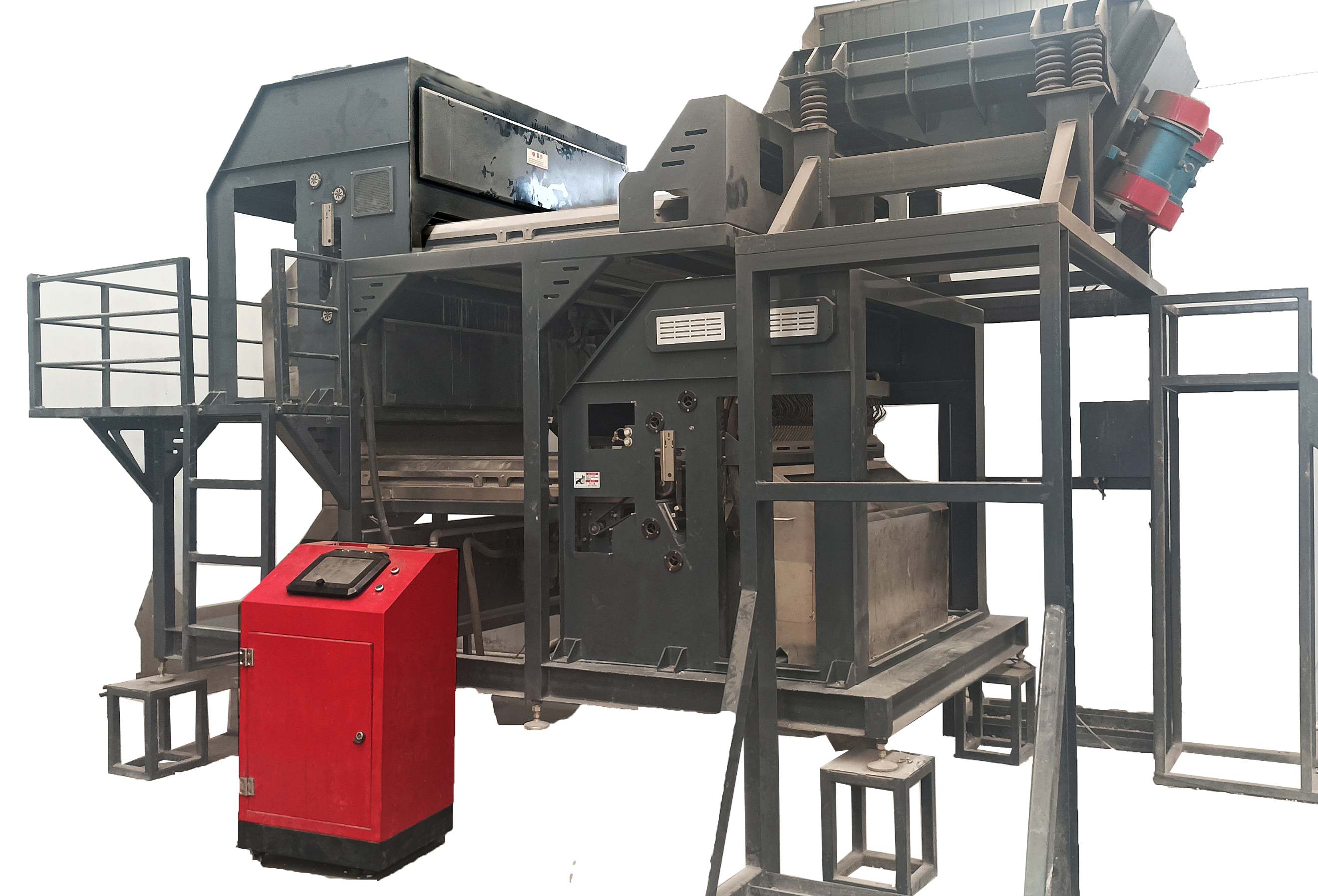 How to Better Select Ore Based on Ore Characteristics?
Jun 04, 2024
How to Better Select Ore Based on Ore Characteristics?
Jun 04, 2024
As the core link of ore utilization in the ore industry, ore sorting plays a vital role in improving ore grade and recovery rate. However, with the reduction of high-grade and easy-to-mine ores and the increasing cost of ore sorting, these are two major problems that plague mining companies. Therefore, how to adopt appropriate ore dressing methods and reduce ore dressing costs have become issues that companies need to solve urgently.
In order to achieve the best ore processing effect, mining companies can reduce the cost of ore sorting by choosing the ore sorting process. At the beginning of the process design, it is necessary to select according to the ore characteristics and design a suitable and efficient ore dressing process. At the same time, due to the requirements of energy conservation and environmental protection, energy-saving and environmentally friendly ore sorting technology should be adopted to reduce energy consumption and environmental pollution, and reduce ore processing costs.
First of all, the ores can be divided into the following categories according to their characteristics:
1. Physical characteristics of ore
The physical characteristics of ore are mainly divided into color, shape, texture, hardness, magnetism, density, etc. Different beneficiation methods can be selected according to the physical characteristics of the ore. For ores with large differences in mineral density, such as barite, hematite, asbestos, mica, kaolin, etc., heavy media can be used for beneficiation; magnetic separation is often used for magnetite and pyrrhotite with strong magnetism, semi-pseudo-hematite with medium magnetism, some ilmenite, chromite, and weakly magnetic hematite and rhodochrosite; fluorite, talc, wollastonite, silica, lithium ore, quartz, potassium feldspar, etc. with large differences in appearance characteristics such as color, texture, shape, and gloss often use photoelectric separation.
2. Chemical characteristics of ore
Different ores have different chemical characteristics, such as composition, acidity and alkalinity. For example, copper oxide ore is often separated and flotated, while gold ore is extracted by amalgamation, cyanide, thiourea, high temperature chlorination and other methods.
3. Structural characteristics of ore
Ore structure refers to the characteristics of mineral particles in the ore:the shape, relative size, inter-embedded relationship of mineral particles or the inter-embedded relationship between mineral particles and mineral aggregates. For example, for impregnated copper-sulfur ore, the preferential flotation process is adopted, and the tailings after copper flotation must be flotted with sulfur again.
4. Ore Origin Environmental Characteristics
Different types of ores are formed in different production environments. For example, the Yuanshanzi nickel-molybdenum ore is of sedimentary metamorphic hydrothermal transformation type. According to the characteristics of the ore, rock crushing, roasting, and flotation with reagents are selected. For example, the sedimentary barite ore in Jingtieshan, Huashugou, Sunan, Gansu and Baiyuxiacun, Sichuan, as well as the hydrothermal barite ore associated with sulfide ores and fluorite, are separated by flotation in addition to gravity separation.
Ore pre-selection experiment
Ore dressing experiments are an important basis for formulating correct ore sorting technology and determining ore sorting equipment. Through ore dressing experiments, ore dressing processes can be optimized and ore dressing costs can be reduced. When conducting ore dressing experiments, a reasonable test plan should be formulated according to ore characteristics and ore sorting requirements, the test process should be optimized, and the test efficiency and accuracy should be improved. During the test, the following points should be noted:
1. Experimental samples should be representative samples of the ore body to ensure the accuracy and reliability of the experiment.
2. The experiment simulated the actual production conditions as much as possible.
3. Conduct statistics and analysis on experimental data, optimize mineral processing process parameters and equipment, and improve mineral processing efficiency and recovery rate.
How to choose mineral processing equipment
https://www.mdoresorting.com/heavy-duty-ai-ore-sorting-machine-ore-sorter-mineral-separator-sorting-38cm-particles
Ore sorting equipment is the key equipment in the mineral processing process. When selecting equipment, it is necessary to fully consider the characteristics and requirements of the ore to select the appropriate equipment. In the process of selecting equipment, performance and cost should be given priority, and factors such as equipment life, wearing parts and operation and maintenance costs should also be considered. At the same time, the choice of manufacturer is also very important, whether it is a professional provider of mining equipment. For example, MINGDE Optoelectronics specializes in the research and development and production of photoelectric mineral processing equipment.
Develop a reasonable mineral processing process
Formulating a reasonable process during the mineral processing is the key to ensuring the mineral processing effect and reducing the mineral processing cost. Reasonable control of each link can effectively reduce losses and operation and maintenance costs. The specific measures are as follows:
1. Reduce equipment overload and wear.
2. Strictly control the operating parameters of mineral processing equipment.
3. Formulate scientific and reasonable maintenance plans for different equipment, and conduct regular inspections and maintenance to effectively extend the service life of the equipment.
In summary, reducing the cost of mineral processing and mineral processing technology should be done from multiple aspects and angles, including reasonable mineral processing process, suitable equipment, control of mineral processing process, rigorous mineral processing experiments, etc. Only by combining various factors,we can the reduction of mineral processing costs and the sustainable development of mining enterprises be achieved.
 Daily Care and Maintenance of Photoelectric Mineral Processing Equipment!
Jun 01, 2024
Daily Care and Maintenance of Photoelectric Mineral Processing Equipment!
Jun 01, 2024
 How to Better Select Ore Based on Ore Characteristics?
Jun 04, 2024
How to Better Select Ore Based on Ore Characteristics?
Jun 04, 2024